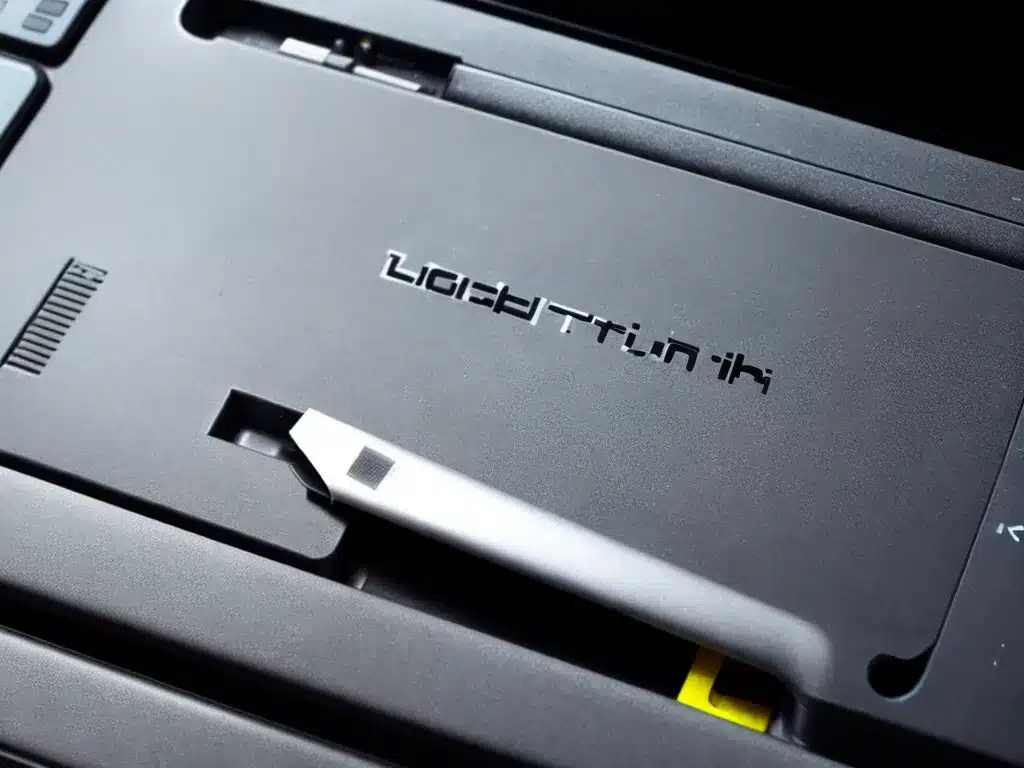
Having issues with your laptop’s touchpad not working can be extremely frustrating. However, there are several easy fixes you can try before taking it in for repairs. In this article, I will provide solutions for the most common causes of a non-responsive touchpad and walk you through how to troubleshoot and resolve them.
Check Touchpad Settings
The first thing to check is your touchpad settings. Sometimes the touchpad gets accidentally disabled or the sensitivity is lowered through your computer’s settings menu.
Steps:
- Open the Start menu and type “mouse” to bring up the “Mouse Properties” window.
- Go to the “Device Settings” tab.
- Make sure the touchpad is both “On” and check the box for “Leave touchpad on when a mouse is connected”.
- Under “TouchPad Sensitivity”, move the slider to increase sensitivity if it’s too low.
- Click “Apply” to save any changes.
This simple settings adjustment fixes many touchpad issues. If that didn’t work, move on to the next solutions.
Update or Reinstall Touchpad Drivers
Outdated, corrupted, or missing drivers are a common cause of touchpad problems. Updating or reinstalling the touchpad drivers can often resolve non-responsiveness issues.
Steps:
- Type “Device Manager” into the Windows search bar and open it.
- Expand the “Mice and other pointing devices” section.
- Right click on the touchpad device and select “Update driver”.
- If that doesn’t work, select “Uninstall device” and then “Scan for hardware changes” to reinstall the drivers.
- Restart your laptop after updating drivers.
Updating drivers is quick and easy. If you still have no functionality, the issue may be hardware-related.
Check for Physical Damage
Inspect under your laptop for any debris or obstructions under the touchpad. Dust, dirt, crumbs from food, or small objects can get lodged under the touchpad and prevent it from clicking down properly. Use a can of compressed air to clear out anything stuck beneath the touchpad.
Also check for:
- Cracked touchpad – Deep cracks can damage the touchpad sensor.
- Loose touchpad – The touchpad may need to be re-secured to the laptop base.
Gently press down on each corner and side of the touchpad to check for a solid, even click response. If part of the touchpad clicks and another doesn’t, this indicates a hardware issue.
Disable and Re-Enable Device
If all else fails, disabling and re-enabling the touchpad device itself through Device Manager forces a hard restart and reconnect.
Steps:
- Open Device Manager > “Mice and other pointing devices”.
- Right click the touchpad and select “Disable device”.
- Right click again and select “Enable device”.
- Restart the laptop.
This resets the touchpad connection and calibration, often resolving even stubborn issues.
When To Take It In for Repair
If you’ve tried all troubleshooting steps and the touchpad still isn’t responding, it likely requires professional repair:
- Loose wire or connection – Internal wiring that connects the touchpad may need re-soldering.
- Faulty hardware – The touchpad sensor or related components could be damaged and need replacing.
A computer repair technician can diagnose the specific hardware issue and perform the necessary touchpad repairs.
Preventing Future Touchpad Problems
Here are some tips to avoid recurring touchpad difficulties:
- Keep your laptop on a clean, dry surface and avoid getting moisture or debris under the touchpad.
- Gently wipe down the touchpad periodically with a microfiber cloth.
- Handle your laptop carefully to avoid drops or closes that may crack the touchpad.
- Update touchpad drivers regularly through Device Manager.
Following basic care guidelines will help keep your laptop’s touchpad working smoothly. But if issues pop up, use the step-by-step troubleshooting guide outlined here to get it functional again.












